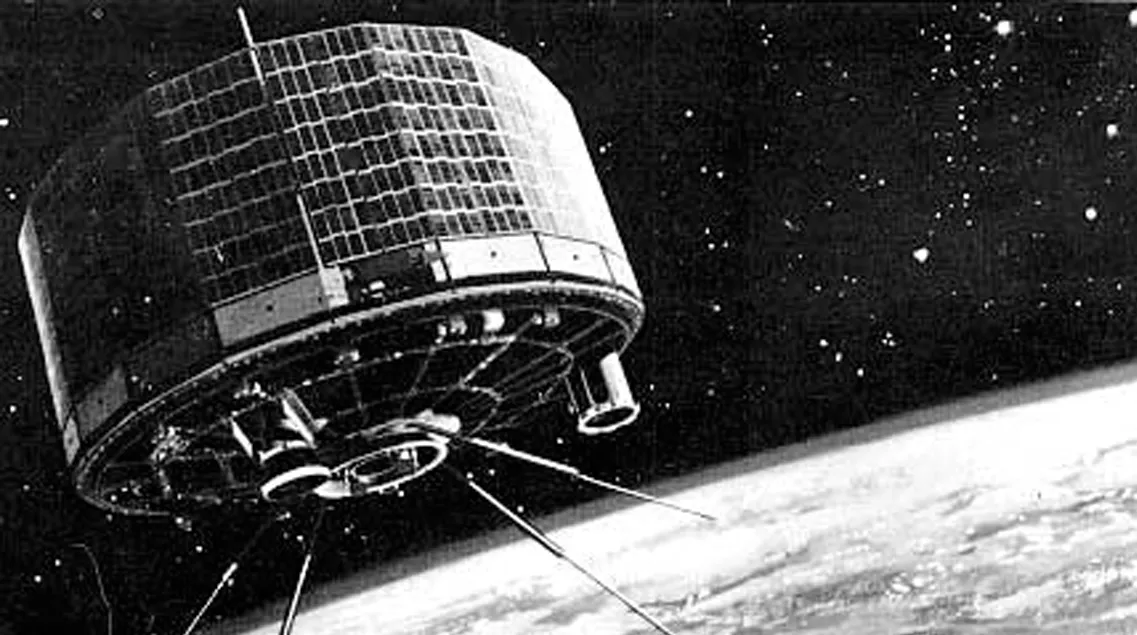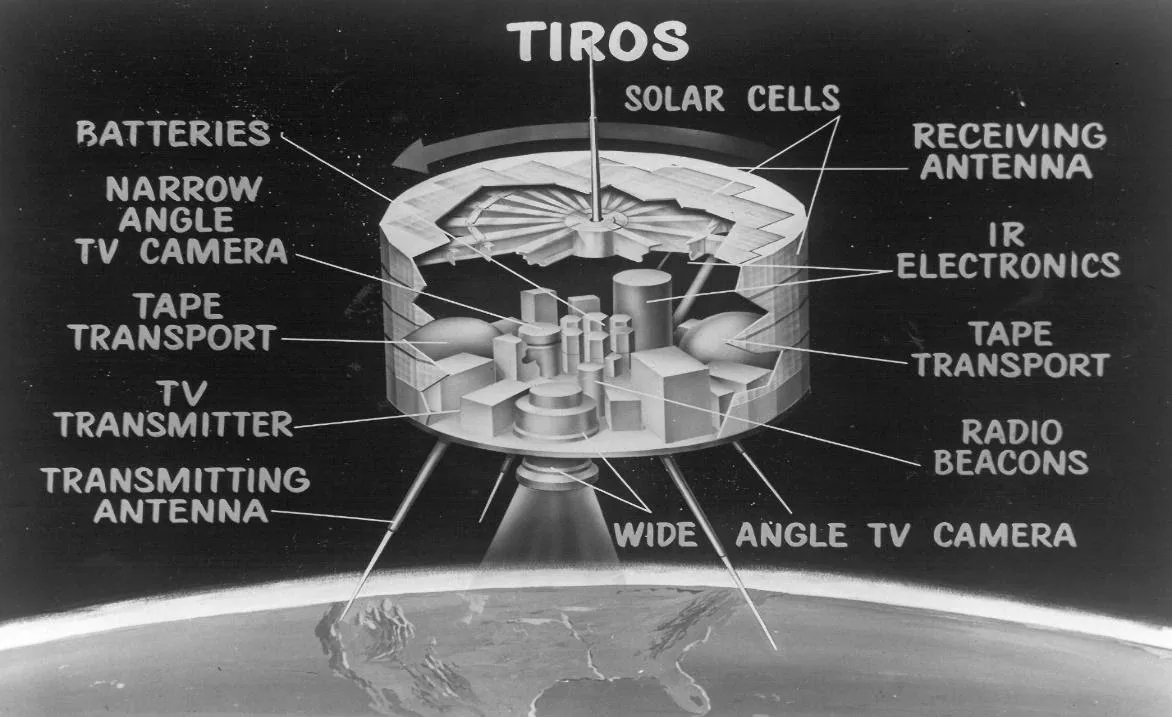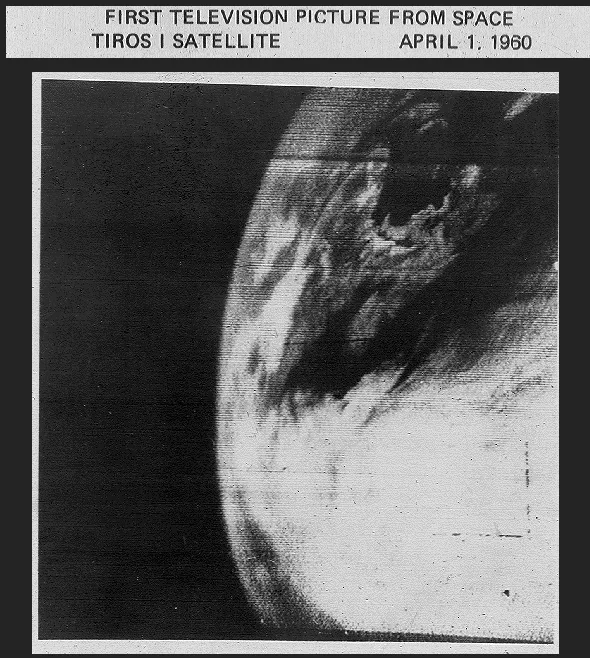On April 1, 1960, the National Aeronautics and Space Administration (NASA) launched TIROS-1, the world’s first successful meteorological satellite.

The TIROS-1 satellite. Credit: NASA
Nearly 63 years ago, on October 4, 1957, the former Soviet Union launched Sputnik 1, the first artificial satellite to be successfully placed in orbit around Earth. This feat ushered in the Space Age and sparked a space race between the United States and its Cold War rival.
This scramble for spaceflight superiority led to the establishment of our nation’s early space programs, and to the launch of Explorer-1 in 1958, the first operational U.S. satellite.
The United States’ earliest attempts to see Earth’s weather from space also began in the 1950s. Several experimental programs were developed and, by 1959, a pioneering weather exploration mission made its way to space onboard the Explorer VII satellite.

An artist rendering of the instruments aboard the TIROS-1 satellite. Credit: NASA
Then on April 1, 1960, NASA launched the Television Infrared Observation Satellite ( TIROS-1 ), the world’s first successful weather satellite. Weighing approximately 270 pounds and carrying two television cameras and two video recorders, the satellite provided weather forecasters their first-ever view of cloud formations as they developed around the globe.
“It really was a milestone in the history of weather observation,” said Stephen Volz , Ph.D., Assistant Administrator of NOAA’s Satellite and Information Service. “TIROS-1 changed our perspective. Up to that point, we were very local in our understanding and our interpretation of weather phenomena.”
Watch NOAA’s video from 2000, TIROS: 40 Years of Discovery
TIROS-1 orbited 450 miles above Earth and communicated with two command and data acquisition stations. When the satellite was in range of a station and the data was read out, the images (up to 32 could be recorded for playback) were recorded on 35-mm film for making prints.
Although the satellite operated for only 78 days, TIROS-1 sent back more than 19,000 usable pictures, proving the worth of weather observing satellites to the world and opening the door for weather technology of the future. The first image from the satellite was a fuzzy picture of thick bands and clusters of clouds over the northeastern United States (below). An image captured a few days later revealed a typhoon about a 1,000 miles east of Australia.

Image from the TIROS-1 satellite. Credit: NASA
Over the next several years, scientists and technologists at NASA and the Environmental Science Services Administration (ESSA; NOAA’s predecessor) designed, built, and launched multiple TIROS missions, each carrying increasingly advanced technology .
See more images of, and from, TIROS-1
By 1970, 10 years after the launch of TIROS-1, NOAA was established in recognition of the value and importance of a meteorological agency supported by space-based observation. As the capabilities of satellites improved, they would evolve into NOAA’s current polar-orbiting satellites, the backbone of the global observing system and numerical weather forecasting.
In 1974, the Synchronous Meteorological Satellite (SMS-1) became the first prototype geostationary satellite. Just a year later , in 1975, the SMS series of satellites became the first operational Geostationary Operational Environmental Satellites (GOES) in orbit with the launch of GOES-1.
Today, with the next generation of environmental observation satellites in orbit — GOES-R and JPSS —we are continuously improving our weather monitoring and prediction with state-of-the-art data and imagery. These satellites are also significantly enhancing our understanding of the Earth as a whole system.
“TIROS was just the first step,” Volz added. “Now we're starting to peel back those environmental layers and understand how they connect together. We can see vegetation health from space and measure how warm the ground is. We can see fires around the world and determine the altimetry of water and waves from space. And all of this is based on what we learned—and what we saw—with our first glimpses from TIROS.”
